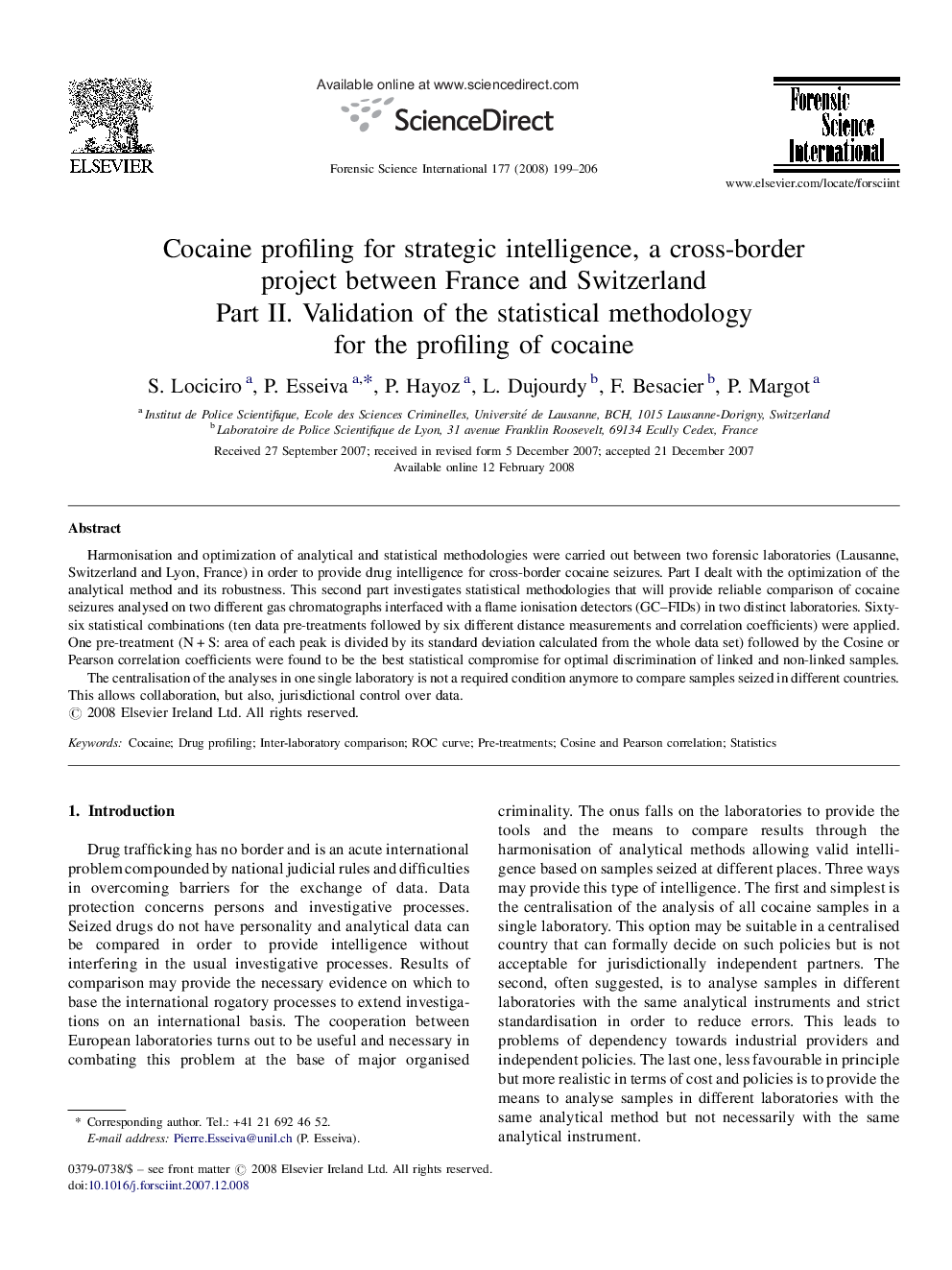| Article ID | Journal | Published Year | Pages | File Type |
|---|---|---|---|---|
| 97653 | Forensic Science International | 2008 | 8 Pages |
Harmonisation and optimization of analytical and statistical methodologies were carried out between two forensic laboratories (Lausanne, Switzerland and Lyon, France) in order to provide drug intelligence for cross-border cocaine seizures. Part I dealt with the optimization of the analytical method and its robustness. This second part investigates statistical methodologies that will provide reliable comparison of cocaine seizures analysed on two different gas chromatographs interfaced with a flame ionisation detectors (GC–FIDs) in two distinct laboratories. Sixty-six statistical combinations (ten data pre-treatments followed by six different distance measurements and correlation coefficients) were applied. One pre-treatment (N + S: area of each peak is divided by its standard deviation calculated from the whole data set) followed by the Cosine or Pearson correlation coefficients were found to be the best statistical compromise for optimal discrimination of linked and non-linked samples.The centralisation of the analyses in one single laboratory is not a required condition anymore to compare samples seized in different countries. This allows collaboration, but also, jurisdictional control over data.
